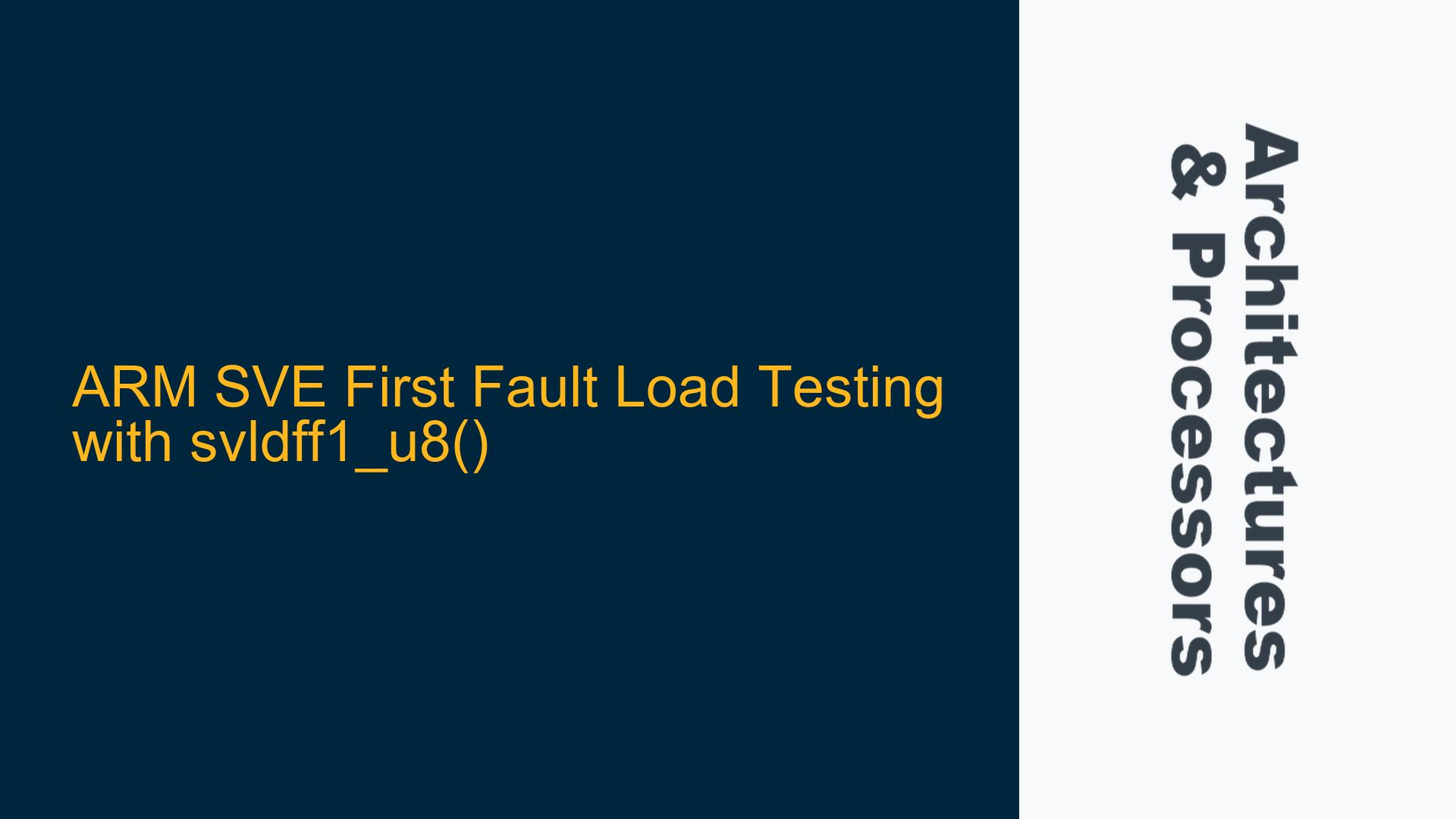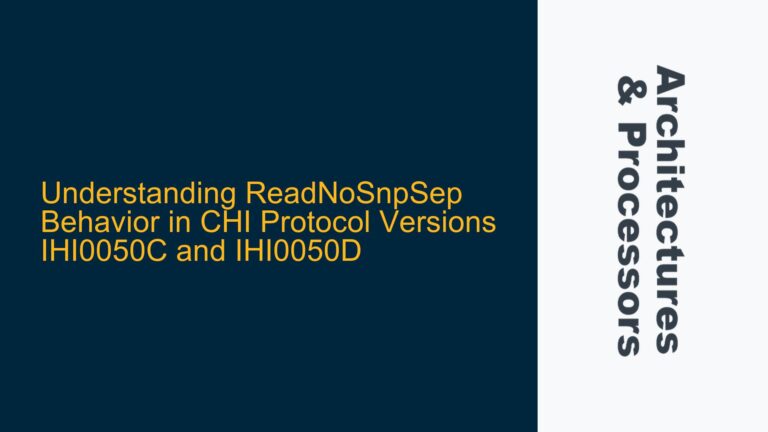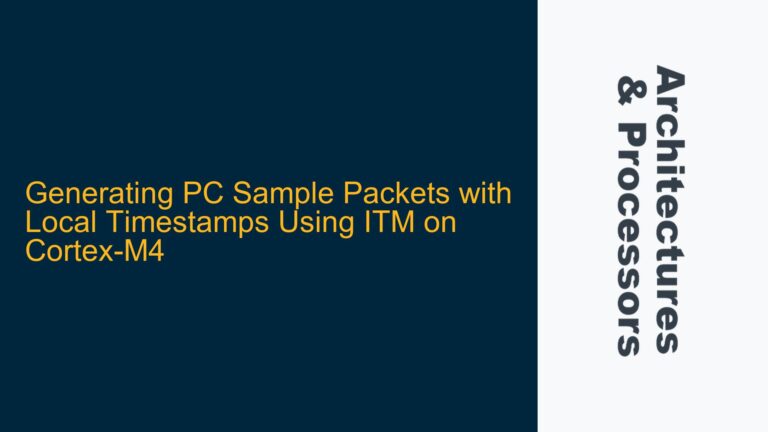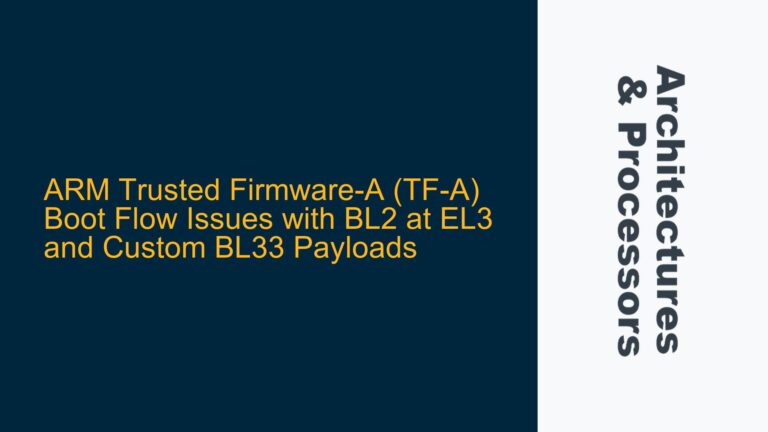ARM SVE First Fault Load Mechanism and svldff1_u8() Behavior
The ARM Scalable Vector Extension (SVE) introduces a powerful feature known as First Fault Load, which allows for speculative memory access in vectorized code. The svldff1_u8() function is a key intrinsic that leverages this feature. It performs a vector load of unsigned 8-bit elements, but with a critical distinction: if any element in the vector access results in a memory fault, the load operation does not immediately trigger a fault. Instead, it marks the faulting elements and allows the program to handle the fault gracefully. This is particularly useful in scenarios where memory access patterns are irregular or where partial access to memory regions is permissible.
The First Fault Load mechanism is designed to improve performance by avoiding unnecessary faults and enabling speculative execution. However, testing this functionality requires careful setup, as the fault must be intentionally induced to observe the behavior of svldff1_u8(). The challenge lies in creating a controlled environment where a memory fault can be generated without crashing the program or causing undefined behavior.
Cross-MMU Page Boundary Access and Fault Induction
To test the First Fault Load functionality of svldff1_u8(), a common approach is to create a memory access pattern that crosses an MMU page boundary. This involves setting up a memory region where one part of the access is valid (i.e., mapped in the MMU page table), while the other part is invalid (i.e., unmapped or protected). When the svldff1_u8() function attempts to load data from this region, the valid portion will succeed, but the invalid portion will trigger a fault. The First Fault Load mechanism ensures that the fault is detected and handled without terminating the program.
The key to inducing this fault lies in the configuration of the MMU page tables. By carefully mapping and unmapping specific memory regions, you can create a scenario where a vector load operation spans both valid and invalid addresses. This requires precise control over the memory layout and an understanding of how the MMU handles page boundaries. Additionally, the size of the SVE vector register must be considered, as it determines the number of elements being loaded and the likelihood of crossing a page boundary.
Implementing and Debugging First Fault Load Tests
To implement a test case for svldff1_u8(), you must first allocate a memory buffer that spans multiple MMU pages. This can be achieved using low-level memory management functions such as mmap() on Linux-based systems. The buffer should be large enough to accommodate the SVE vector length, and the page size should be taken into account to ensure that the access crosses a page boundary. Once the buffer is allocated, you can manipulate the MMU page tables to unmap or protect specific pages within the buffer.
Next, you need to write the test code that uses svldff1_u8() to load data from the buffer. The load operation should be designed to span both the valid and invalid regions of the buffer. After the load, you can check the result to verify that the First Fault Load mechanism correctly identified the faulting elements. This can be done by examining the predicate register associated with the load operation, which will indicate which elements were successfully loaded and which triggered a fault.
Debugging this setup requires careful attention to detail. If the fault is not induced as expected, you may need to verify the memory layout and the MMU page table configuration. Tools such as debuggers and memory analyzers can be invaluable in this process. Additionally, you should ensure that the SVE vector length is correctly configured and that the test code is compiled with the appropriate flags to enable SVE instructions.
Once the test case is successfully implemented, you can extend it to cover more complex scenarios, such as nested faults or multiple faulting elements. This will provide a comprehensive understanding of the First Fault Load mechanism and its behavior under different conditions. By systematically testing and debugging the svldff1_u8() function, you can ensure that your SVE-based code is robust and capable of handling memory faults gracefully.
Detailed Explanation of ARM SVE First Fault Load Mechanism
The ARM Scalable Vector Extension (SVE) is designed to enhance the performance of vectorized workloads by providing a flexible and scalable architecture. One of the key features of SVE is the First Fault Load mechanism, which allows for speculative memory access. This mechanism is particularly useful in scenarios where memory access patterns are irregular or where partial access to memory regions is permissible.
The svldff1_u8() function is an intrinsic that leverages the First Fault Load mechanism. It performs a vector load of unsigned 8-bit elements, but with a critical distinction: if any element in the vector access results in a memory fault, the load operation does not immediately trigger a fault. Instead, it marks the faulting elements and allows the program to handle the fault gracefully. This is achieved through the use of predicate registers, which indicate the success or failure of each element in the vector load.
The First Fault Load mechanism is designed to improve performance by avoiding unnecessary faults and enabling speculative execution. However, testing this functionality requires careful setup, as the fault must be intentionally induced to observe the behavior of svldff1_u8(). The challenge lies in creating a controlled environment where a memory fault can be generated without crashing the program or causing undefined behavior.
Cross-MMU Page Boundary Access and Fault Induction
To test the First Fault Load functionality of svldff1_u8(), a common approach is to create a memory access pattern that crosses an MMU page boundary. This involves setting up a memory region where one part of the access is valid (i.e., mapped in the MMU page table), while the other part is invalid (i.e., unmapped or protected). When the svldff1_u8() function attempts to load data from this region, the valid portion will succeed, but the invalid portion will trigger a fault. The First Fault Load mechanism ensures that the fault is detected and handled without terminating the program.
The key to inducing this fault lies in the configuration of the MMU page tables. By carefully mapping and unmapping specific memory regions, you can create a scenario where a vector load operation spans both valid and invalid addresses. This requires precise control over the memory layout and an understanding of how the MMU handles page boundaries. Additionally, the size of the SVE vector register must be considered, as it determines the number of elements being loaded and the likelihood of crossing a page boundary.
Implementing and Debugging First Fault Load Tests
To implement a test case for svldff1_u8(), you must first allocate a memory buffer that spans multiple MMU pages. This can be achieved using low-level memory management functions such as mmap() on Linux-based systems. The buffer should be large enough to accommodate the SVE vector length, and the page size should be taken into account to ensure that the access crosses a page boundary. Once the buffer is allocated, you can manipulate the MMU page tables to unmap or protect specific pages within the buffer.
Next, you need to write the test code that uses svldff1_u8() to load data from the buffer. The load operation should be designed to span both the valid and invalid regions of the buffer. After the load, you can check the result to verify that the First Fault Load mechanism correctly identified the faulting elements. This can be done by examining the predicate register associated with the load operation, which will indicate which elements were successfully loaded and which triggered a fault.
Debugging this setup requires careful attention to detail. If the fault is not induced as expected, you may need to verify the memory layout and the MMU page table configuration. Tools such as debuggers and memory analyzers can be invaluable in this process. Additionally, you should ensure that the SVE vector length is correctly configured and that the test code is compiled with the appropriate flags to enable SVE instructions.
Once the test case is successfully implemented, you can extend it to cover more complex scenarios, such as nested faults or multiple faulting elements. This will provide a comprehensive understanding of the First Fault Load mechanism and its behavior under different conditions. By systematically testing and debugging the svldff1_u8() function, you can ensure that your SVE-based code is robust and capable of handling memory faults gracefully.
Detailed Explanation of ARM SVE First Fault Load Mechanism
The ARM Scalable Vector Extension (SVE) is designed to enhance the performance of vectorized workloads by providing a flexible and scalable architecture. One of the key features of SVE is the First Fault Load mechanism, which allows for speculative memory access. This mechanism is particularly useful in scenarios where memory access patterns are irregular or where partial access to memory regions is permissible.
The svldff1_u8() function is an intrinsic that leverages the First Fault Load mechanism. It performs a vector load of unsigned 8-bit elements, but with a critical distinction: if any element in the vector access results in a memory fault, the load operation does not immediately trigger a fault. Instead, it marks the faulting elements and allows the program to handle the fault gracefully. This is achieved through the use of predicate registers, which indicate the success or failure of each element in the vector load.
The First Fault Load mechanism is designed to improve performance by avoiding unnecessary faults and enabling speculative execution. However, testing this functionality requires careful setup, as the fault must be intentionally induced to observe the behavior of svldff1_u8(). The challenge lies in creating a controlled environment where a memory fault can be generated without crashing the program or causing undefined behavior.
Cross-MMU Page Boundary Access and Fault Induction
To test the First Fault Load functionality of svldff1_u8(), a common approach is to create a memory access pattern that crosses an MMU page boundary. This involves setting up a memory region where one part of the access is valid (i.e., mapped in the MMU page table), while the other part is invalid (i.e., unmapped or protected). When the svldff1_u8() function attempts to load data from this region, the valid portion will succeed, but the invalid portion will trigger a fault. The First Fault Load mechanism ensures that the fault is detected and handled without terminating the program.
The key to inducing this fault lies in the configuration of the MMU page tables. By carefully mapping and unmapping specific memory regions, you can create a scenario where a vector load operation spans both valid and invalid addresses. This requires precise control over the memory layout and an understanding of how the MMU handles page boundaries. Additionally, the size of the SVE vector register must be considered, as it determines the number of elements being loaded and the likelihood of crossing a page boundary.
Implementing and Debugging First Fault Load Tests
To implement a test case for svldff1_u8(), you must first allocate a memory buffer that spans multiple MMU pages. This can be achieved using low-level memory management functions such as mmap() on Linux-based systems. The buffer should be large enough to accommodate the SVE vector length, and the page size should be taken into account to ensure that the access crosses a page boundary. Once the buffer is allocated, you can manipulate the MMU page tables to unmap or protect specific pages within the buffer.
Next, you need to write the test code that uses svldff1_u8() to load data from the buffer. The load operation should be designed to span both the valid and invalid regions of the buffer. After the load, you can check the result to verify that the First Fault Load mechanism correctly identified the faulting elements. This can be done by examining the predicate register associated with the load operation, which will indicate which elements were successfully loaded and which triggered a fault.
Debugging this setup requires careful attention to detail. If the fault is not induced as expected, you may need to verify the memory layout and the MMU page table configuration. Tools such as debuggers and memory analyzers can be invaluable in this process. Additionally, you should ensure that the SVE vector length is correctly configured and that the test code is compiled with the appropriate flags to enable SVE instructions.
Once the test case is successfully implemented, you can extend it to cover more complex scenarios, such as nested faults or multiple faulting elements. This will provide a comprehensive understanding of the First Fault Load mechanism and its behavior under different conditions. By systematically testing and debugging the svldff1_u8() function, you can ensure that your SVE-based code is robust and capable of handling memory faults gracefully.
Detailed Explanation of ARM SVE First Fault Load Mechanism
The ARM Scalable Vector Extension (SVE) is designed to enhance the performance of vectorized workloads by providing a flexible and scalable architecture. One of the key features of SVE is the First Fault Load mechanism, which allows for speculative memory access. This mechanism is particularly useful in scenarios where memory access patterns are irregular or where partial access to memory regions is permissible.
The svldff1_u8() function is an intrinsic that leverages the First Fault Load mechanism. It performs a vector load of unsigned 8-bit elements, but with a critical distinction: if any element in the vector access results in a memory fault, the load operation does not immediately trigger a fault. Instead, it marks the faulting elements and allows the program to handle the fault gracefully. This is achieved through the use of predicate registers, which indicate the success or failure of each element in the vector load.
The First Fault Load mechanism is designed to improve performance by avoiding unnecessary faults and enabling speculative execution. However, testing this functionality requires careful setup, as the fault must be intentionally induced to observe the behavior of svldff1_u8(). The challenge lies in creating a controlled environment where a memory fault can be generated without crashing the program or causing undefined behavior.
Cross-MMU Page Boundary Access and Fault Induction
To test the First Fault Load functionality of svldff1_u8(), a common approach is to create a memory access pattern that crosses an MMU page boundary. This involves setting up a memory region where one part of the access is valid (i.e., mapped in the MMU page table), while the other part is invalid (i.e., unmapped or protected). When the svldff1_u8() function attempts to load data from this region, the valid portion will succeed, but the invalid portion will trigger a fault. The First Fault Load mechanism ensures that the fault is detected and handled without terminating the program.
The key to inducing this fault lies in the configuration of the MMU page tables. By carefully mapping and unmapping specific memory regions, you can create a scenario where a vector load operation spans both valid and invalid addresses. This requires precise control over the memory layout and an understanding of how the MMU handles page boundaries. Additionally, the size of the SVE vector register must be considered, as it determines the number of elements being loaded and the likelihood of crossing a page boundary.
Implementing and Debugging First Fault Load Tests
To implement a test case for svldff1_u8(), you must first allocate a memory buffer that spans multiple MMU pages. This can be achieved using low-level memory management functions such as mmap() on Linux-based systems. The buffer should be large enough to accommodate the SVE vector length, and the page size should be taken into account to ensure that the access crosses a page boundary. Once the buffer is allocated, you can manipulate the MMU page tables to unmap or protect specific pages within the buffer.
Next, you need to write the test code that uses svldff1_u8() to load data from the buffer. The load operation should be designed to span both the valid and invalid regions of the buffer. After the load, you can check the result to verify that the First Fault Load mechanism correctly identified the faulting elements. This can be done by examining the predicate register associated with the load operation, which will indicate which elements were successfully loaded and which triggered a fault.
Debugging this setup requires careful attention to detail. If the fault is not induced as expected, you may need to verify the memory layout and the MMU page table configuration. Tools such as debuggers and memory analyzers can be invaluable in this process. Additionally, you should ensure that the SVE vector length is correctly configured and that the test code is compiled with the appropriate flags to enable SVE instructions.
Once the test case is successfully implemented, you can extend it to cover more complex scenarios, such as nested faults or multiple faulting elements. This will provide a comprehensive understanding of the First Fault Load mechanism and its behavior under different conditions. By systematically testing and debugging the svldff1_u8() function, you can ensure that your SVE-based code is robust and capable of handling memory faults gracefully.
Detailed Explanation of ARM SVE First Fault Load Mechanism
The ARM Scalable Vector Extension (SVE) is designed to enhance the performance of vectorized workloads by providing a flexible and scalable architecture. One of the key features of SVE is the First Fault Load mechanism, which allows for speculative memory access. This mechanism is particularly useful in scenarios where memory access patterns are irregular or where partial access to memory regions is permissible.
The svldff1_u8() function is an intrinsic that leverages the First Fault Load mechanism. It performs a vector load of unsigned 8-bit elements, but with a critical distinction: if any element in the vector access results in a memory fault, the load operation does not immediately trigger a fault. Instead, it marks the faulting elements and allows the program to handle the fault gracefully. This is achieved through the use of predicate registers, which indicate the success or failure of each element in the vector load.
The First Fault Load mechanism is designed to improve performance by avoiding unnecessary faults and enabling speculative execution. However, testing this functionality requires careful setup, as the fault must be intentionally induced to observe the behavior of svldff1_u8(). The challenge lies in creating a controlled environment where a memory fault can be generated without crashing the program or causing undefined behavior.
Cross-MMU Page Boundary Access and Fault Induction
To test the First Fault Load functionality of svldff1_u8(), a common approach is to create a memory access pattern that crosses an MMU page boundary. This involves setting up a memory region where one part of the access is valid (i.e., mapped in the MMU page table), while the other part is invalid (i.e., unmapped or protected). When the svldff1_u8() function attempts to load data from this region, the valid portion will succeed, but the invalid portion will trigger a fault. The First Fault Load mechanism ensures that the fault is detected and handled without terminating the program.
The key to inducing this fault lies in the configuration of the MMU page tables. By carefully mapping and unmapping specific memory regions, you can create a scenario where a vector load operation spans both valid and invalid addresses. This requires precise control over the memory layout and an understanding of how the MMU handles page boundaries. Additionally, the size of the SVE vector register must be considered, as it determines the number of elements being loaded and the likelihood of crossing a page boundary.
Implementing and Debugging First Fault Load Tests
To implement a test case for svldff1_u8(), you must first allocate a memory buffer that spans multiple MMU pages. This can be achieved using low-level memory management functions such as mmap() on Linux-based systems. The buffer should be large enough to accommodate the SVE vector length, and the page size should be taken into account to ensure that the access crosses a page boundary. Once the buffer is allocated, you can manipulate the MMU page tables to unm






